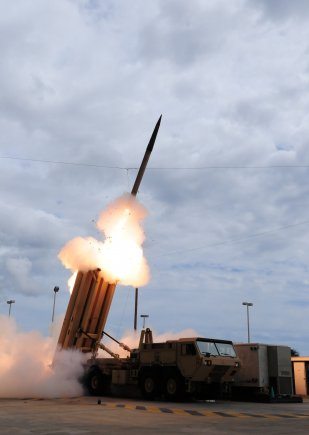 Photo via The United States Army
Photo via The United States Army
A Shift in United States Missile Defense
Last week, the Washington Post reported that the Trump administration is working on expanding the U.S. missile defense policy. This new policy will continue to call for technology to intercept missiles from rogue states, but will also address “certain threats from Russia and China”. The Pentagon is focusing on ways the United States can counter missile threats from these two great powers in areas where their systems have alarmed the military.
Including Russia and China in the new missile defense policy is a significant departure from the Obama era missile defense plans. The 2010 Ballistic Missile Defense Review Report (BMDR), determined the primary missile threats to the United States are rogue states—North Korea, Iran and Syria. To maintain these states as a priority, the administration scrapped plans set in place by the Bush administration in favor of the European Phased Adaptive Approach (EPAA). This approach emphasized enhancing the protection of NATO allies and creating defense sites on the west coast and Alaska.
It is important to note that the new policy could change as it is still in the drafting phase. However, if the changes are occurring as the Washington Post reports, a key aspect will be how the new policy will affect American security and its allies.
On March 1st, Russian President Vladimir Putin announced the development of several new military systems in his State of the Nation address, including an emphasis on growing Russia’s nuclear capabilities. These new systems highlighted weapons that can be deployed to initiate a nuclear strike, such as the nuclear-powered cruise missile that has an “unlimited range” and a new form of hypersonic missile that is difficult for defense systems to detect. Nevertheless, a key point to note is that these new Russian delivery systems seemed geared toward defeating advances in U.S. missile defenses, even though Russia is already capable of this.
China also has a powerful and wide range of missiles within its arsenal. While its nuclear arsenal is relatively small in comparison to the United States or Russia, it has recently acquired the final legs of a viable nuclear triad and has begun fielding its next generation of various ballistic missiles, including moving toward hypersonic capabilities.
Both of these nations’ nuclear arsenals are too large to completely counter a strategic threat from them with current missile defense capabilities, and the Pentagon knows it. Due to the inability of the U.S., Russia, or China to defend against each other’s strategic missile forces, the introduction of effective anti-ballistic missile technologies against any of these actors by another destabilizes the deterrence environment. This instability would render current arms control agreements in effective, and set the world back on a path towards Cold War-level nuclear arms race.
Russia’s posturing at the State of the Nation last week is an obvious reaction to the language being used by the Trump administration in reports like the 2018 Nuclear Posture Review. Increasing this rhetoric threatens to have China and Russia strengthen their position and lower the threshold to potential misunderstanding and a higher level of threat around the world.
In the 2010 BMDR, the Obama administration highlighted the need to expand international efforts for missile defense and establish a cooperative Ballistic Missile Defense relationship with China and Russia for the security of the U.S. and its allies. While the Trump administration has championed breaking from the Obama era policies, this is an area where they should continue the policies of the past. The anti-ballistic missile capabilities, as will be outlined in the new policy, should be trained on rogue states rather than states we cannot fully protect against. Utilizing non-nuclear capabilities, diplomacy, and the strength of our alliances is the best to deter Russia and China is the best way to avoid an arms race that would have lasting effects on the security of the United States.





